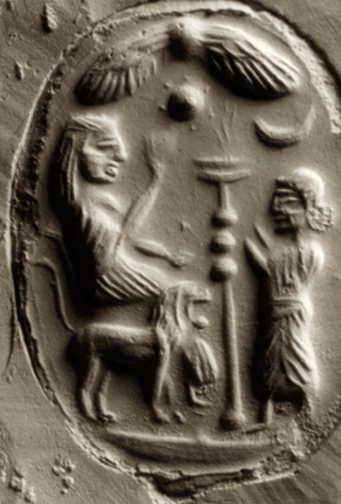
Offering benediction to a supplicant, under the winged sun and possibly the planet Venus. Many of these Phoenician scarabs show a brazier.
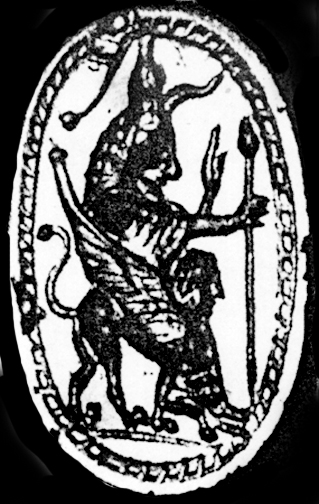
Drawing of a scarab from Syracuse, Sicily, where many Phoenician finds exhibit strong Egyptian influence. The goddess holds a lotus sceptre often seen as an attribute of Kemetic goddesses.
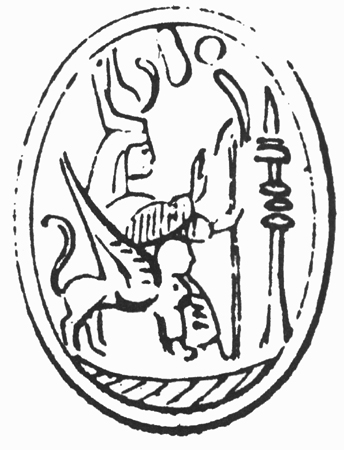
Egyptianate goddess on breasted sphinx throne with was-sceptre and burning brazier. She wears the Kemetic crown of the Two Lands.
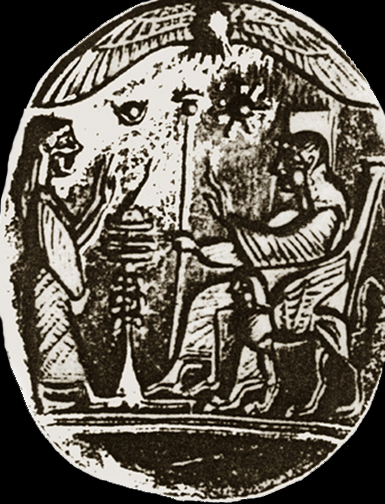
Scarab from Sidon, Lebanon, with winged sun
and the star of 'Ashtart (planet Venus)
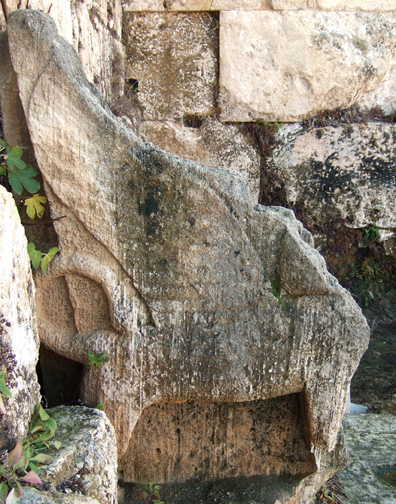
Throne of 'Ashtart, in her Phoenician chapel
inside the Eshmun temple, Sidon, Lebanon.
The lion thrones in the scarabs depict actual thrones in Goddess temples.
Examples are known from Sidon, Lebanon; 'Ain Dara, NW Syria;
Dura Europos,
on the Euphrates, Syria; and Khirbet et-Tannur, Jordan.
Besides these, Inanna, Ishtar, and Kybele are depicted on lion thrones,
while Isthtar, QDSU/Qadashah, 'Ashtart, Asherah (in Tree form), Anahita, and the
Hurrian goddess Hebat are among the goddesses shown standing on lions.
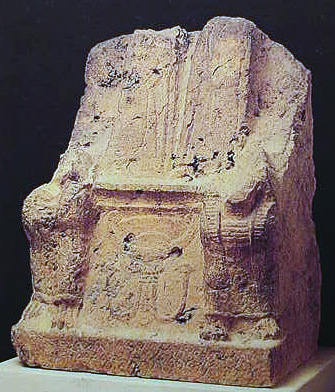
Astarte Throne with Kemetic Sphinxes, Palmate Sign, and Two Betyls
representing the Goddess and Her Consort. Khirbet et-Taibeh,
Tyre, Lebanon, 2nd century bce.
The betyls (from beit-el, house of the god) are sacred stones of a type
that goes back to Hazor nearly a millennium before, as well as countless earlier
examples in the Levant and Arabia.
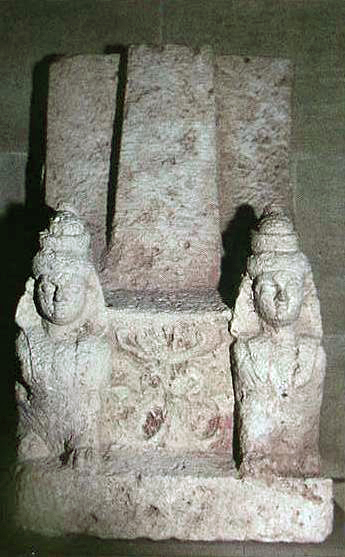
Phoenician throne with betyl and Tree of Life motif.
Lebanon, 4th to 1st century bce
This one has many similarities to the throne above,
including the male sphinxes and the tree symbol
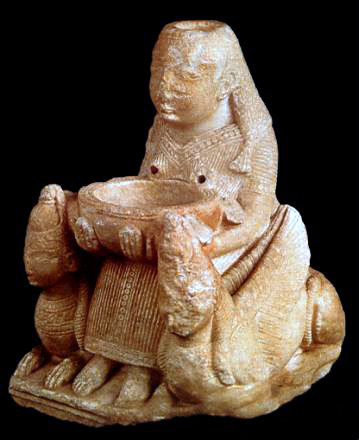
Another view of the 'Ashtart of Galera (Tutugí), Granada.
She was found in a Spanish burial circa 450 bce but
produced by Syrian or Lebanese artists near 200 years earlier.
A hellenistic Kybele from Ashdod, with her drum and a mural crown, borrowed from the Syrian goddess Tyche.
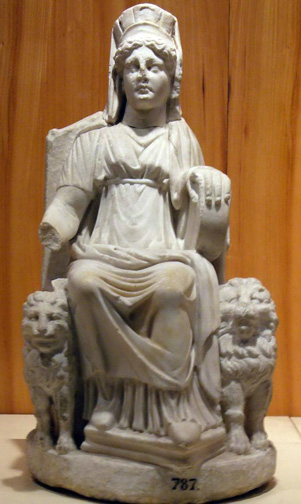
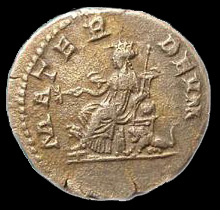
Kybele on a Roman coin, title Mater Deum, "Mother of the Gods.
She sits on the lion throne with sceptre and mural crown.
Other examples in this pattern are the goddess shown between lions on the clay altar from Taanach. the lions of the famous Ishtar Gate in Babylon, and the many cylinder seals showing her standing or sitting on lions; coins with Atargatis of Hierapolis, Syria, and Juno Caelestis of Tunisia, riding on lions' backs. I'm told that 4th century bce coins from Salamis, Cyprus, show Aphrodite standing on a lion or seated on a lion throne. In Africa, older than all of these are the lion-headed goddesses, most famously Sekhmet, with a profusion of black basalt statues, and the lion-faced goddess of Carthage, Tunisia.
Max Dashu
For more on this theme, see my article Goddess Temples in Western Asia